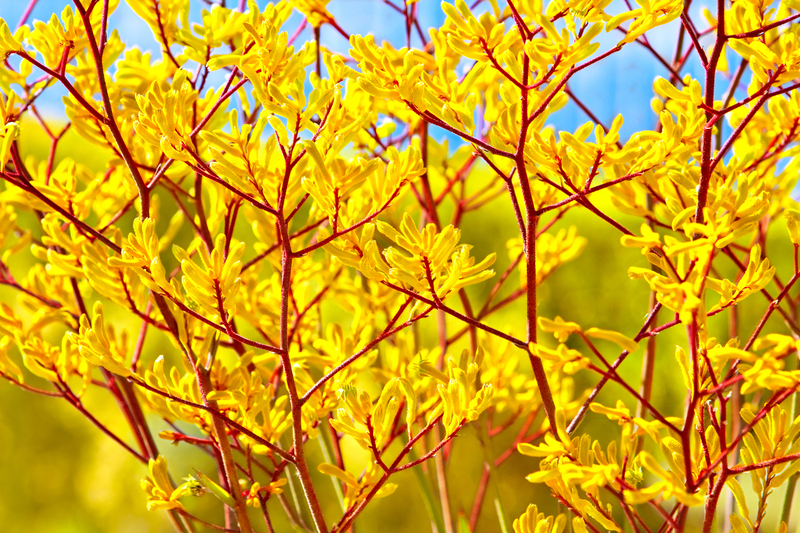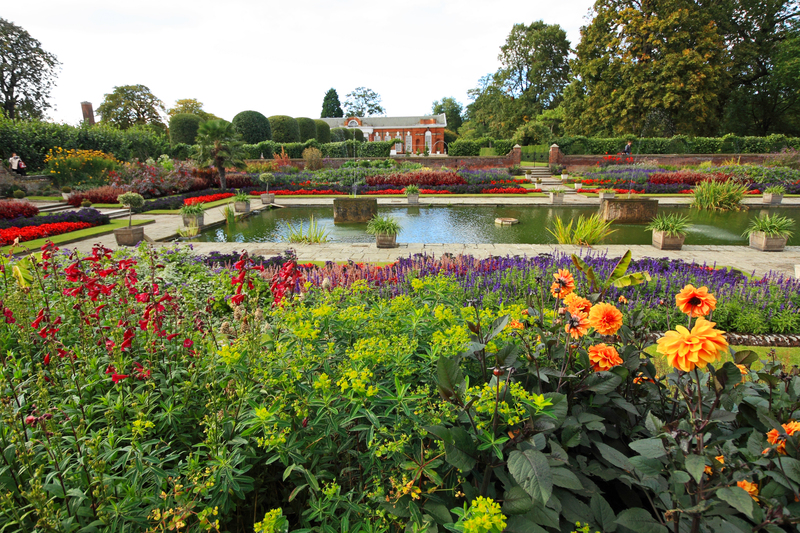Planting Seeds for a Greener Future: Gardening and Climate Change
Posted on 22/08/2025
Planting Seeds for a Greener Future: Gardening and Climate Change
As the world faces the pressing challenges of climate change, our individual actions are more important than ever. One accessible, impactful way to contribute to a healthier planet is by integrating sustainable gardening practices into our daily lives. Planting seeds today paves the way for a greener, more resilient future--and gardens, big or small, can play a crucial role in mitigating climate change.
Understanding the Connection: Gardening and Climate Change
Climate change is caused by the release of greenhouse gases like carbon dioxide (CO2) into the atmosphere, mostly from burning fossil fuels and deforestation. Gardening serves as a natural counterbalance, helping to capture and store atmospheric carbon, support biodiversity, and reduce urban temperatures--all while providing food and enhancing well-being. The relationship between planting seeds and a greener future is deeper than it seems; it's rooted in the power of local action to drive global change.
How Does Gardening Help Combat Climate Change?
- Carbon Sequestration: Plants absorb CO2 during photosynthesis, locking carbon away in their leaves, stems, and especially root systems and the surrounding soil.
- Biodiversity Boost: Diverse gardens attract pollinators, beneficial insects, and wildlife, strengthening local ecosystems that are more resilient to climate stress.
- Reduced Urban Heat: Gardens, through shading and transpiration, help lower surface and air temperatures in cities, battling the "urban heat island" effect.
- Food Security: By growing our own fruits and vegetables, we cut down on transportation emissions and support sustainable, local food systems.
- Waste Reduction: Composting garden and food waste returns nutrients to the soil and keeps organic material out of landfills, where it would generate methane, a potent greenhouse gas.

Why Planting Seeds for a Greener Future Matters
Each seed sown isn't just the beginning of a plant--it's a step toward climate resilience. Whether you're planting flowers, vegetables, trees, or native species, your garden can contribute to positive environmental change.
Social and Environmental Benefits
- Improved Air Quality: Vegetation filters pollutants, dust, and allergens, leading to cleaner air and better respiratory health for communities.
- Enhanced Mental Wellbeing: Numerous studies underscore the calming and restorative effects of gardening on mental health.
- Water Conservation: Thoughtfully planned gardens can help capture rainwater, prevent runoff, and improve groundwater recharge, crucial in areas facing droughts due to climate change.
- Educational Opportunities: Gardens offer hands-on learning environments for children and adults to understand ecology, sustainability, and the basics of climate science.
Collectively, these benefits promote the vision of gardening for a sustainable future, which is more necessary than ever in our changing world.
Seeds of Change: Climate-Friendly Gardening Practices
Adopting sustainable gardening habits amplifies the positive effect of your efforts. Here are practical ways to make your gardening both eco-friendly and climate-resilient:
Selecting the Right Plants
- Native species: Native plants are adapted to local weather and soil conditions, requiring less water and no synthetic fertilizers or pesticides.
- Climate-resilient varieties: Choose plants bred for drought-tolerance, disease resistance, or temperature extremes for your region.
Soil Health: The Foundation of a Green Garden
- Organic matter: Add compost, leaf mulch, and natural amendments that not only enrich the soil but boost its ability to store carbon.
- Minimal tilling: Disturbing the soil less protects beneficial microbes and fungi that aid in carbon sequestration and plant health. Try "no-dig" gardening methods.
Water Wisely
- Rainwater collection: Harvest rainwater to irrigate your garden and decrease reliance on municipal water sources.
- Drip irrigation: Water at the roots where plants need it most, reducing evaporation and runoff.
- Drought-tolerant landscaping: Group plants with similar water needs and use mulch to lock in moisture.
Garden for Wildlife
- Pollinator-friendly spaces: Plant flowers with varied bloom times, limit pesticide use, and provide nesting sites for bees, butterflies, and birds.
- Diverse habitats: Incorporate shrubs, ground covers, water sources, and dead wood piles to host a range of creatures.
Compost and Mulch
- Homemade compost: Turn kitchen scraps and yard waste into rich, organic soil amendment--closing nutrient loops and cutting landfill emissions.
- Mulch: Use leaves, grass clippings, bark, or straw to insulate soil, suppress weeds, and promote moisture retention.
Reduce, Reuse, Recycle
- Upcycle materials: Repurpose containers, old wood, or bricks for raised beds and pathways.
- Natural alternatives: Eschew plastic products or synthetic chemicals in favor of sustainable materials and organic amendments.
The Role of Urban Gardening in Climate Solutions
Urban areas produce a significant portion of global CO2 emissions. However, urban gardening and greening projects offer hope and a way forward:
- Rooftop and balcony gardens: Add green space in dense cities, insulate buildings, and grow food close to residents.
- Community gardens: Bring people together, create ecological corridors, and transform vacant lots into productive landscapes.
- Green infrastructure: Urban trees, rain gardens, and green roofs help manage stormwater and reduce flooding risks, both worsened by climate change.
Leading cities worldwide are now incentivizing green spaces and incorporating gardening into city planning to create more liveable, cooler, climate-adapted urban environments.
Gardening for Climate Resilience: What the Science Says
Scientific research supports the significant role of gardens in reducing the impacts of climate change. Several studies conclude that **carbon sequestration by urban forests and private gardens** is a powerful, underused tool in climate action. According to the Royal Horticultural Society, even small actions--like choosing organic practices, planting trees, and composting--can substantially increase soil carbon storage and biodiversity.
Moreover, climate-resilient gardens act as living laboratories, showing communities how to adapt to future challenges through water-wise landscapes, disease-resilient crops, and drought-adapted designs. A garden isn't just a passive absorber of CO2; it's a dynamic, interactive space where innovation and adaptation flourish.
Steps to Start Your Climate-Friendly Garden
Ready to plant seeds for a greener tomorrow? Here's a step-by-step guide to get started:
- Assess Your Space: Whether a windowsill, balcony, yard, or community plot, every garden helps.
- Choose the Right Plants: Prioritize native and resilient varieties suited to your local environment.
- Prepare the Soil: Add compost and minimize digging to enhance carbon storage.
- Plan for Water: Install rain barrels, use mulch, and consider efficient watering systems.
- Start Composting: Set up a bin or pile for organic waste recycling.
- Support Wildlife: Incorporate features that benefit pollinators and beneficial insects.
- Learn and Share: Join local gardening groups, share seeds, and educate neighbors about sustainable practices.
Remember, every seed planted paves the way for a more climate-resilient future. The cumulative effect of thousands--even millions--of gardens embracing climate-smart practices can help tip the balance toward planetary health.
Gardening, Community, and Climate Leadership
The future depends on collective action, and local gardening efforts can inspire broader change. By working together, sharing resources, and amplifying each other's voices, gardeners can influence community policies, advocate for green space protections, and help neighbors adapt to climate realities.
- Education: Host workshops on climate-smart gardening and composting.
- Seed libraries: Trade and preserve resilient seed varieties.
- Volunteer: Join or lead climate-action gardening projects in schools or public parks.
- Advocate: Work with local leaders to expand green infrastructure and support sustainable gardening initiatives.
The Future Grows Here: Plant Seeds Today for a Greener Tomorrow
Climate change often feels overwhelming, and the solutions can seem out of reach. But by planting seeds--literally and metaphorically--for a greener future, each of us can create a ripple effect for positive environmental change.
Sustainable gardening is not just about growing food or flowers; it's about restoring ecosystems, sequestering carbon, saving water, reducing waste, and nurturing hope. As more people understand how gardening and climate action are intertwined, we edge closer to a world where ecological health and human wellbeing flourish together.
So gather your seeds, your spade, and your sense of stewardship. With every plant, every compost heap, and every habitat created, you're helping to shape a more sustainable, resilient planet--one garden at a time.

Frequently Asked Questions About Gardening and Climate Change
How does gardening help reduce my carbon footprint?
By growing your own food and composting organic waste, you reduce reliance on transported groceries and decrease landfill emissions. Gardens and healthy soils also store carbon from the atmosphere, cutting greenhouse gases.
What are the best plants for climate-friendly gardening?
Native perennials, trees, and shrubs top the list! They adapt well to local conditions and support wildlife. Drought-tolerant and climate-resilient non-invasive varieties are also good choices.
Can urban gardening really make a difference?
Absolutely! Urban gardens cool neighborhoods, improve air quality, support pollinators, and can even influence city climate policy. Every bit of green counts.
How do I start composting at home?
Start with a simple bin or pile. Layer green (kitchen scraps) and brown (leaves, cardboard) materials, keep moist but not soggy, and turn occasionally. Finished compost smells earthy and looks like dark soil.
Together, Let's Plant Seeds for a Sustainable Future
By embracing climate-friendly gardening, we build more than beautiful landscapes--we cultivate resilience, hope, and a legacy for generations. Start today; the seeds you plant can change the world.

